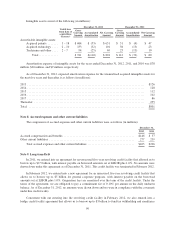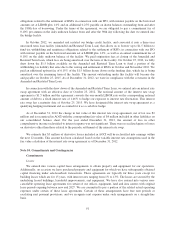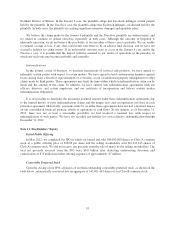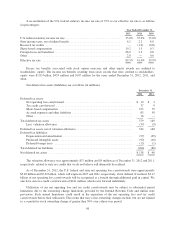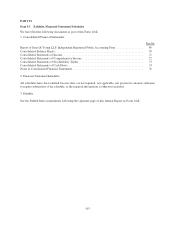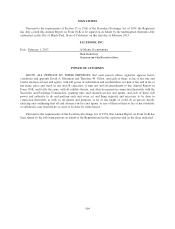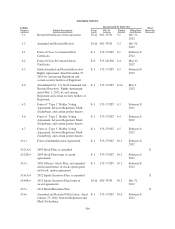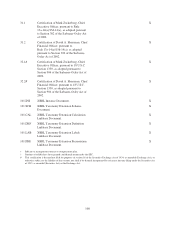Facebook 2012 Annual Report Download - page 102
Download and view the complete annual report
Please find page 102 of the 2012 Facebook annual report below. You can navigate through the pages in the report by either clicking on the pages listed below, or by using the keyword search tool below to find specific information within the annual report.
A reconciliation of the U.S. federal statutory income tax rate of 35% to our effective tax rate is as follows
(in percentages):
Year Ended December 31,
2012 2011 2010
U.S. federal statutory income tax rate ..................................... 35.0% 35.0% 35.0%
State income taxes, net of federal benefit ................................... 6.2 2.2 4.0
Research tax credits ................................................... — (1.0) (0.8)
Share-based compensation .............................................. 19.2 1.5 0.3
Foreign losses not benefited ............................................. 26.9 3.3 0.8
Other ............................................................... 2.0 — 0.6
Effective tax rate ..................................................... 89.3% 41.0% 39.9%
Excess tax benefits associated with stock option exercises and other equity awards are credited to
stockholders’ equity. The income tax benefits resulting from stock awards that were credited to stockholders’
equity were $1.03 billion, $433 million and $107 million for the years ended December 31, 2012, 2011, and
2010.
Our deferred tax assets (liabilities) are as follows (in millions):
December 31,
2012 2011
Deferred tax assets:
Net operating loss carryforward .............................................. $ 10 $ 3
Tax credit carryforward .................................................... 37 9
Share-based compensation .................................................. 233 79
Accrued expenses and other liabilities ......................................... 83 58
Other ................................................................... 16 —
Total deferred tax assets ........................................................ 379 149
Less: valuation allowance ................................................... (37) (9)
Deferred tax assets, net of valuation allowance ...................................... 342 140
Deferred tax liabilities:
Depreciation and amortization ............................................... (97) (69)
Purchased intangible assets ................................................. (92) (10)
Deferred foreign taxes ..................................................... (15) (1)
Total deferred tax liabilities ..................................................... (204) (80)
Net deferred tax assets ......................................................... $138 $ 60
The valuation allowance was approximately $37 million and $9 million as of December 31, 2012 and 2011,
respectively, related to state tax credits that we do not believe will ultimately be realized.
As of December 31, 2012, the U.S. federal and state net operating loss carryforwards were approximately
$5.83 billion and $7.62 billion, which will expire in 2027 and 2021, respectively, if not utilized. If realized, $2.17
billion of net operating loss carryforwards will be recognized as a benefit through additional paid in capital. We
also have state tax credit carryforwards of $181 million, which carry forward indefinitely.
Utilization of our net operating loss and tax credit carryforwards may be subject to substantial annual
limitations due to the ownership change limitations provided by the Internal Revenue Code and similar state
provisions. Such annual limitations could result in the expiration of the net operating loss and tax credit
carryforwards before their utilization. The events that may cause ownership changes include, but are not limited
to, a cumulative stock ownership change of greater than 50% over a three-year period.
98




